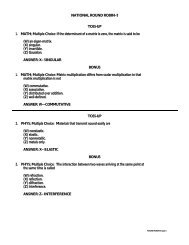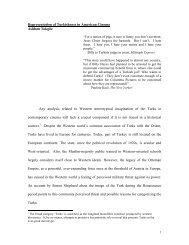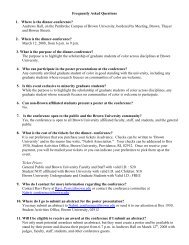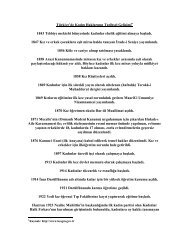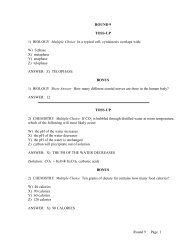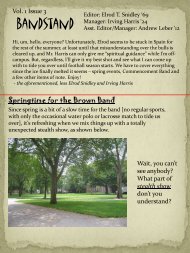Download as a .pdf file - Brown University
Download as a .pdf file - Brown University
Download as a .pdf file - Brown University
Create successful ePaper yourself
Turn your PDF publications into a flip-book with our unique Google optimized e-Paper software.
Contemplative Judaism<br />
miracles and wonders performed throughout time. One stands and is<br />
permitted to sway and rock. At this point in the service, one becomes<br />
ready to engage in a major peak of the service.<br />
The third section of shacharit is Keriat Shema—blessings and reading<br />
of the Shema. The word shema means “hear” or “listen” and it is the most<br />
ancient and important prayer in Judaism. 45 The prayer’s literal meaning<br />
is: “Listen, Israel, YHVH our God, YHVH is One.” The first word of the<br />
prayer shows that this is a time for meditation. This is an opportunity to<br />
internalize the waves of emotion and energy from the previous section of the<br />
service, to be still and to listen with utmost kavanah. During the recitation<br />
of the Shema, one sits down and closes one’s eyes. Kaplan encourages one<br />
to dwell on each word of the Shema for fifteen to twenty seconds. 46 This<br />
way, one may draw insight from each bit of the prayer. For example, one<br />
might notice that the first word, sh-m-a, represents a contemplative path<br />
to nothingness: the first letter, shin, is the sound of white noise, chaos;<br />
the second letter, mem, is the opposite sound, one of perfect harmonics;<br />
and the third letter, ayin, is silent and denotes nothingness. 47 This type of<br />
meditation is related to hitbonenut (intellectual), and thus corresponds with<br />
the beriah level of consciousness and stimulates the neshama.<br />
The fourth stage of the morning service is the Shemoneh Esrei—<br />
eighteen benedictions, also known <strong>as</strong> the Amidah, which literally means<br />
“that which involves standing.” These are the l<strong>as</strong>t and profoundest of<br />
prayers. 48 One stands with feet together and, during Kabbalists encourage<br />
one to stand completely still. This posture symbolizes the elimination of<br />
self-expression and the abandonment of one’s self <strong>as</strong> a separate, independent<br />
existence. 49 One enters the world of atzilut, the world of oneness, with the<br />
soul-level of chayah. The Shemoneh Esrei blessings should be recited with<br />
eyes closed, and very slowly. The original saints took an hour to say the<br />
500 words of the Amidah. 50 The fact that Jews are encouraged to engage<br />
in such prayer services three to four times per day reflects the extent to<br />
which Judaism is meant to be a contemplative way of life.<br />
Judaism encourages people to engage in contemplation at every<br />
moment. The Ve’Ahavta, the prayer recited immediately after the Shema,<br />
commands Jews to “love H<strong>as</strong>hem, your God, with all your heart, with<br />
all your soul and with all your resources…while you sit in your home,<br />
while you walk on the way, when you retire and when you arise.” In<br />
33



